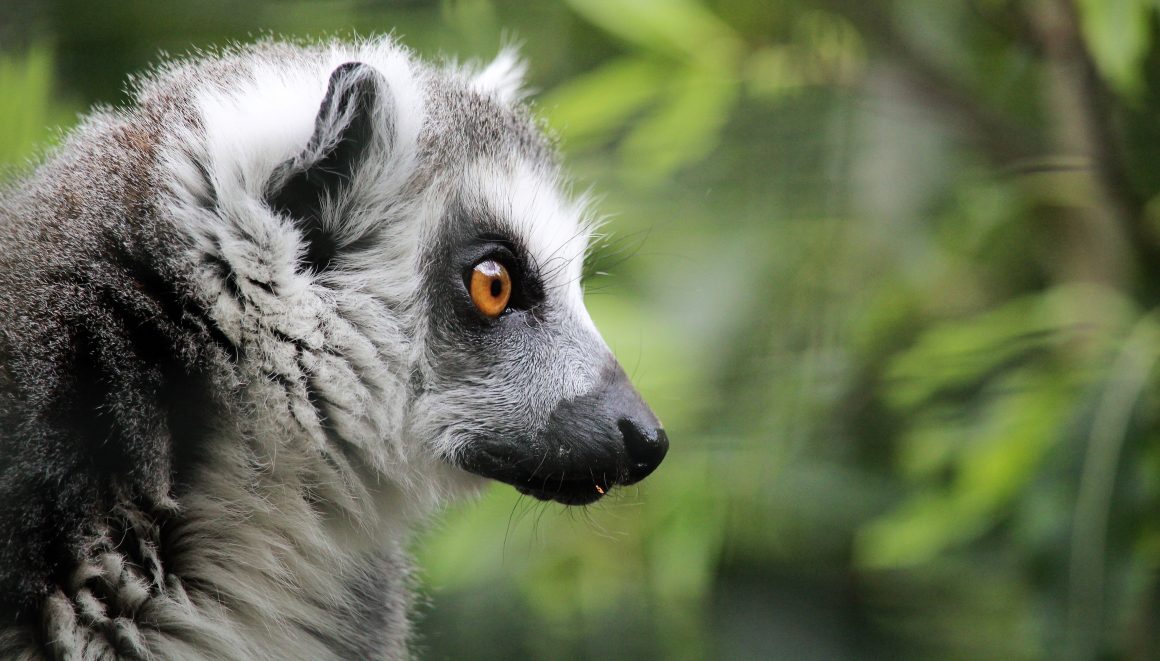
Wildlife Conservation Showcase: Dr. Steig Johnson
By Holly Hastings, March 9 2020 —
Steig Johnson, Associate Professor in the Department of Anthropology and Archaeology, and Associate Dean for Research and Infrastructure for the Faculty of Arts at the University of Calgary, focuses his research on the ecology, conservation and population biology of lemurs in Madagascar. His lab consists of six graduate students, all actively participating in research in Madagascar.
Picture yourself in the rainforests of Costa Rica — hear the sounds near and far, the smells and the feelings and the experience of a sudden change of environment to the agricultural developments of North America. The vitality of life commingling in the forests near the Panamanian border welcomed Dr. Johnson to his first field research. On his return home, Johnson said, “just the sense of the loss of the vibrancy of the forest was a real moment for me.”
First and foremost a faculty member and researcher at the U of C, conservation comes into play through research questions that are addressed in Johnson’s work with lemurs in Madagascar.
Compared to Costa Rica, Johnson describes Madagascar as “really night-and-day, down to the land use. [Madagascar] consists of very sterile landscapes and lots of abandoned landscapes that are hard to see.”
The most prominent project that Johnson is working on is an initiative that is a partnership with the Calgary Zoo, the Omaha Zoo and the Madagascar Biodiversity Partnership. These organizations are concerned with a particular cluster of forest fragments in Southeastern Madagascar that is critical habitat for some very endangered species.
“Black and White Ruffed Lemurs, the Greater Bamboo Lemur and the Aye-Ayes are all found in Madagascar in relatively significant numbers and followed by researchers such as myself,” said Johnson.
Johnson states that his main goal in this partnership is monitoring the lemurs. Since 2010, Johnson and his team have been studying the Black and White Ruffed Lemurs. To keep the program going year-round, they incorporated international volunteer research assistants to participate and local technicians over the 10 years have become incredibly skilled and guide the research assistants. They maintain a constant presence over the lemurs, monitoring the animals, studying their behaviour, studying how they interact with their altered environment. Johnson is eager to see how the lemurs are colonizing the new habitats that his team is creating for them.
Ten years may sound like a long time, but in terms of conservation, it is still considered the early days. In 2009, the Madagascar Biodiversity Partnership (MBP), in a spin-off of the Omaha Zoo’s operations, started to get directly involved in the challenge of engaging local communities in conservation initiatives. Incentives to attract the local population to the cause include a conservation credits program where individuals can earn credits towards certain green technologies, such as solar panels or water filters or employment. This program has had a big and positive impact on the people of Madagascar. The MBP deploys a myriad of initiatives, some mentioned by Johnson include protecting the existing forests but more ambitiously trying to reconnect them by building out reforestation corridors.
The lemurs themselves are implicated in the reforestation process. Studies from fecal samples show that fruit-eating lemurs are an integral part of the seed dispersal process for these new forests. From this data, we can see that the forest is directly benefiting from the lemurs. On the flip side, the lemurs will directly benefit from the forest as this data suggests that when these new forests mature, there will be food for the lemurs.
Johnson says “tying in the existing lemur ecology [is integral] to how we are trying to create new environments for them.”
Another conservation hat Johnsons wears is his work with the leadership group of the Madagascar section of the International Union for Conservation of Nature’s (IUCN) Primate Groups. The IUCN has classified the endangerment of lemurs as follows — on the IUCN Red List of Threatened Species, of the 103 species of lemurs, 24 are now listed as ‘Critically Endangered,’ 49 are ‘Endangered’ and 20 are ‘Vulnerable.’ Working on more of a global scale, the group comes up with the action plans for lemur conservation by assessing the endangerment status of all Malagasy lemurs.
The IUCN has classified the black and white ruffed lemurs “as Critically Endangered as the species is believed to have undergone a decline of 80 per cent over a period of 27 years, due primarily to a decline in area and quality of habitat within the known range of the species and due to levels of exploitation.”
“Really engaging the local communities seems the way forward for primate conservation. Making sure the communities are involved in the decision making, the management and really benefiting from the conservation initiatives is the real goal and struggle. Madagascar is a really poor country, and with bad health, these are really challenging communities to bring benefits to,” said Johnson.
This is something that Johnson is always concerned about with his work, that the communities are being benefited rather than being tacked on to projects in face saying that these are community-based projects.
